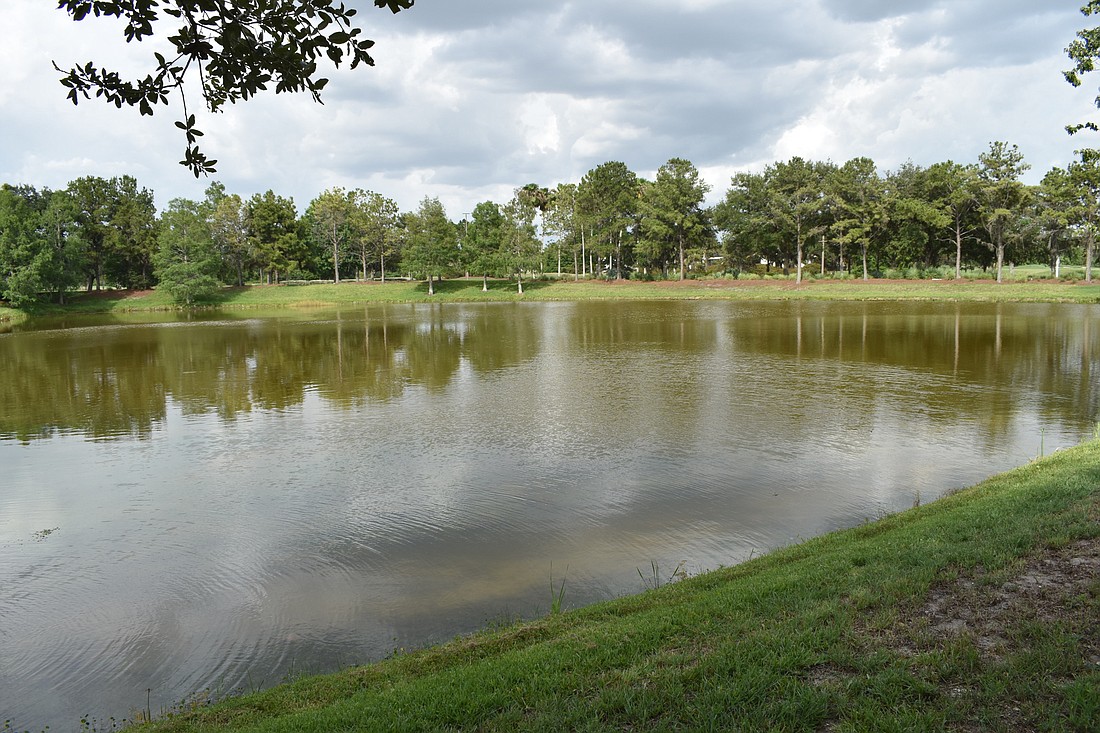- April 16, 2025
-
-
Loading

Loading

With a handful of ponds suffering different levels of "brownification" in the County Club and Lake Club villages, the Inter-District Authority has been seeking answers, including those from University of Florida scientists.
Tom Merrell, the IDA's director of operations, had previously noted the emergence of browning ponds. “We’re not really sure what’s causing it,” he said. “It’s a phenomenon that we’re seeing pop up more throughout the community.”
As a result, the IDA asked the scientists to offer some solutions.
Alongside the scientists was Michelle Atkinson, an environmental horticulture agent with the University of Florida IFAS Extension in Manatee County.
Atkinson is currently working with University of Florida researchers with the UF Institute of Food and Agricultural Sciences to study how efficient plants can be absorbing nitrogen and phosphorus found in stormwater that is running unabated into ponds.
That four-year study was sparked by a $197,000 Environmental Protection Agency grant to study how using plants around the edge of stormwater ponds can significantly filter stormwater.
The ponds studied included one at Greenbrook County Park in Lakewood Ranch and another on Cooper Creek Boulevard in East County.
Atkinson said the IDA's current situation is complex, and samples have been taken at all the ponds that are browning. Scientists are studying the results before finalizing their recommendations to the IDA.
She said the various ponds might need different solutions.
“No one is the same as any other one,” she said. “They have different runoff, different drainage — there’s no silver bullet.”
She said some of the ponds might even need dredging as a last resort, but there are many other strategies to try before getting to that point.
Dail Laughinghouse, an assistant professor of applied phycology who is leading the study of the local ponds, said he was intrigued to find out that the causes of brown ponds throughout the community were all varied. He said that some contained dissolved suspended solids and others dissolved organic matter, while still others contained an increased abundance of algae or cyanobacteria.
He said that the contents of ponds are largely influenced by their surroundings and that even though all surroundings would appear similar, they in fact are not. He said factors that influence the contents of ponds are the size of the ponds, the size of nearby yards, whether areas are planted or unplanted, and whether there are golf courses nearby.
He also said “brownification” is being seen in many parts of the world including Sweden, Finland and Canada.
According to Laughinghouse, suspended and dissolved solids found in Lakewood Ranch ponds can possibly be explained by runoff from nearby construction. He said the best option might be to wait for the pond to mature past these issues.
Atkinson said a pond in The Lake Club cleared up without any intervention after the testing had indicated that its brown contents were due to runoff.
Laughinghouse said flocculants can be used to treat suspended solids in the water. These are chemicals that will adhere to bits of matter and bind them together, sinking them to the bottom of the pond. Atkinson said that flocculants, however, did not succeed on one pond in Country Club, so further solutions are being investigated.
Supporting what Atkinson said, Laughinghouse said more plants can help absorb nutrients that lead to algae blooms.
The scientists have noted the presence of dissolved organic matter in the ponds, which can be tannins. These are biomolecules that bind to organic matter and create a brown coloration in water.
Laughinghouse said there are cyanobacteria in some ponds, which it creates a brownish or yellowish-brown color when it blooms, rather than the blue-green color that is more typical. He said elevated levels of chlorophyll in the ponds reflected the prevalence of the bacteria.
He said all the ponds need to be studied over time to collect more data.
Atkinson said additional difficulties arise because of the interconnectedness of the network of ponds; they are adjoined through overspills and tunnels, passing algae and other materials along in a chain toward the Braden River. This means that it can be difficult to determine whether it is the immediate surroundings of the pond that are causing the browning.
Nutrients that cause algae can even remain in the soil and reemerge after a period of years, in which case they are known as known as “legacy nutrients.”
He also wants people to understand that the ponds mostly exist as part of an engineered system of waterways designed to retain pollutants that could be more harmful if they were to reach nearby bodies of water.
“It’s theoretically lakefront property, but the ponds have a purpose, and the purpose is to collect materials,” he said. “These are all built systems. They’re all engineered.”
Merrell said the reclaimed water used in Lakewood Ranch for irrigation is rich in nutrients.
Atkinson said this task is important because nutrients, such as nitrogen and phosphorous, are, in fact, a problem for the environment. She said that they tend to benefit the growth of invasive plant species more than they do native ones; plant species that are native will grow without the requirement of additional fertilization.
Atkinson said that the university staff plan to speak with Merrell in the near future.